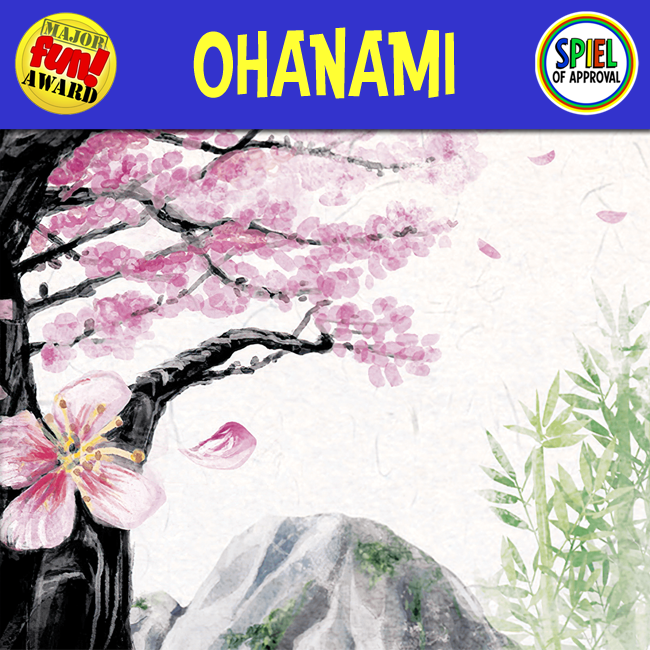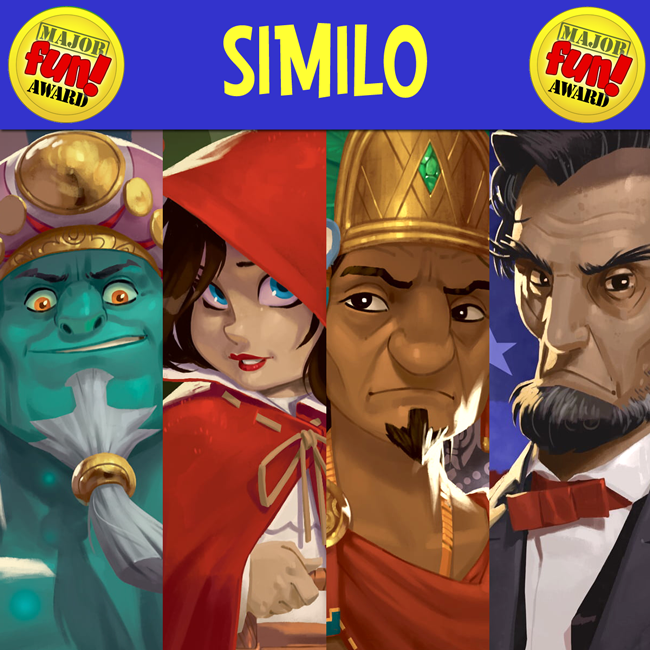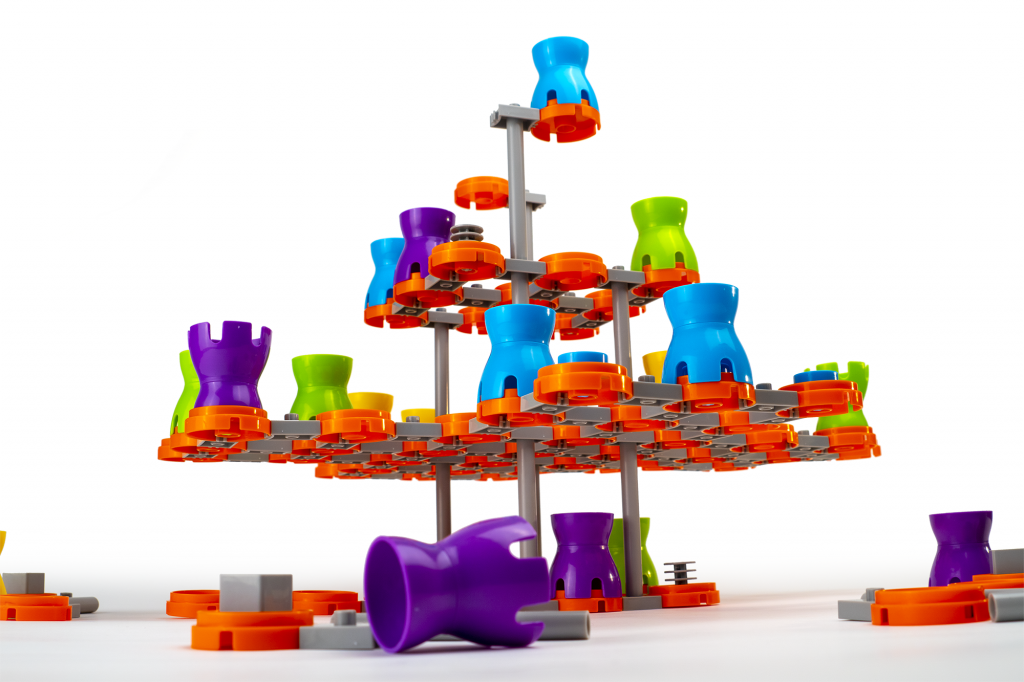
Ohanami

D: Steffen Benndorf
A: Christian Opperer
P: NSV, Pandasaurus Games
2-4 players 20 min. ages 8+ MSRP $15
5 minutes to learn
Written by: Doug Richardson

Cherry blossom season is about to blanket Zen gardens with their resplendent wonder. Water, vegetation, stones, and sakura trees must be placed in perfect harmony in order to become a Master Gardener.
Over three rounds you will carefully select or reject the elements for your next garden creation. Do you have the skills to craft the best Zen garden?

Ohanami is played with a deck of 120 cards, numbered from 1 to 120. Each card depicts one of four elements: water (blue), plants (green), stones (grey), or cherry blossoms (pink).To help score your game, a handy pad of scoresheets is included.

Ohanami is a card drafting and set collecting game. Over three rounds, players will hope to be the most masterful gardener by drafting and scoring sets of elements by skillfully adding these to their three gardens.
Each round starts by dealing ten cards to each player. Then players select two cards to keep for their gardens.
Once you’ve chosen two cards, you will pass the remaining cards on to the next player. Before you look at any new cards, all players will reveal the two cards they’ve selected, and place them into one of three gardens or discard them.
These two cards may go into the same garden or into separate gardens. Either way, you’ll only have three gardens for the entire game. And you’ll find the cards you place define the limits of your gardens.
Let’s look at an example. Let’s say you’ve selected the blue 68 and the green 75. You decide to put this water feature and that bit of shrubbery into the same garden. From now on, only cards numbered higher than 75, or lower than 68 may be put in this garden.
In other words, you may never place a card with a number that falls between two other cards into a garden. Such a card will have to go into one of your other gardens, or be discarded from the game.
So, on one hand, you’ll be selecting cards based on their number to fit into your gardens. BUT, you’ll also choose cards to play based on how each color group scores.
At the end of the first round, only the blue water feature cards will score. Count the total number of blue cards in your gardens and earn 3 points for each of them. None of your other cards will score in round one.
In round two, both your blue water cards, and your green plant cards will score. Blue will again earn you 3 points apiece. Green will be worth 4 points each. Note: you are scoring for all the blue and all the green in your gardens, not just the cards you added during this round.
At the end of round three, all your cards will score one more time. Blue 3 points and green 4. Now your grey stone cards will score, and you’ll get 7 points for each of them.
Finally, your pink cherry blossom cards will score.
If you have one lone pink card, you’ll get 1 point. Two pink cards get you 3 points, 3 pink cards are worth 6 points (1 + 2 + 3 = 6, etc.)…all the way up to 120 points for 15 or more pink cards.
So, let’s review. Draft two cards each turn. Choose to either fit them into one of your three gardens or discard them. Draft and pass through ten cards per hand over three rounds. Score the relevant elements of your growing garden each round. Highest score wins and becomes the Master Gardener!

First, some context, in Japan a Hanami is a planned excursion, a sort of picnic and stroll under the blossoming cherry trees. Life slows, and time is taken to appreciate the beauty of rock and water, bush and flowering trees.
People use Zen gardens to disentangle themselves from the cares of everyday life, and engage with nature. In the same way, Ohanami the game allows us to engage with the nature of play itself.
When we sit down to play any tabletop game, we accept the fact that we are fooling ourselves. We haven’t really become kings commanding great armies, or builders erecting a city, or farmers growing the best crops. We are merely players, abiding by a set of rules, and using simple items of paper and plastic and wood to depict our imaginary world.
All games are abstractions. Some games refuse to put on airs. What is the theme of checkers? Doesn’t matter; just capture your opponent’s pieces and win.
Some games go to elaborate ends to try and convince you of their made-up “reality”. These are usually found in gigantic boxes crammed with elaborate carved pieces and fantastic terrain. And generally with a fantastic price attached.
By comparison, you might think Ohanami isn’t even trying. 120 cards and a scorepad? Really? Well, hold on, I think Ohanami is one of the most thematic games around.
Who are we? Clearly, we are gardeners, assigned the task of creating three Zen gardens. The pieces we choose for these gardens must both fit (numerically) and add up to a pleasing whole.
Each turn you sort through the goods on offer and select two candidates to take back to your workshop. Hopefully, you’ve chosen well and can fit these new pieces into your expanding gardens.
Of course, you’ll keep an eye on what your rivals are doing. No sense leaving all the choicest pieces to them! Which means you view each small decision with both an eye toward your gardens, and a glance over the fence at what is happening next door.
Because your concern is with both the numbers on the cards and the types of landscape they represent, both the mathematical and aesthetic parts of your brain are involved in every decision. In a very simple way, this mimics why people enjoy zen gardens: engagement.
Because the rules are brief, you are playing within moments. Even with your first choices, you are setting the constraints of your three little worlds. In a flash, a round is over and scored. Repeat twice and the game is done.
And yet Ohanami never feels rushed. The lightness of rules allows you to notice the smallest detail: to appreciate the gardens around you and compare them with your own – to feel the world stop for 20 minutes and appreciate the joy of play.

Ohanami creates a pleasing challenge out of mere pasteboard and ink, which replicates the experience of enjoying a well laid out garden. A subtle experience, but yet one available to anyone old enough to know their numbers and colors.
Finding a game which plays quickly is easy. Finding one which plays quickly and deeply and with a structure which supports the theme of the game is much rarer.
Ohanami is a short, but evocative game. It is accessible to almost anyone. The gift it gives us is time: leaving us to look forward to many years beneath the cherry blossoms in quiet, playful contemplation.
A game with such humble beauty and quiet pleasure needs no fanfare. Exactly the reason we find it so worthy of both our awards.
***
Written by: Doug Richardson


































































